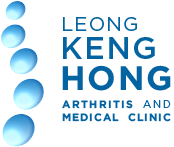
When
The Body
Attacks Itself Inside
2015|2016
2015|2016
Treatment tailored for individual needs helps sufferers
When patients complain of tender, aching joints, it could be due to arthritis, a problem arising from the joint, or rheumatism, which is a problem of the tendons, ligaments and muscles. Arthritis causes joints to become inflamed or worn out. To improve the quality of life, a quick and early diagnosis is important as proper treatment and medication can prevent further damage to the cartilage and bone, while helping to alleviate pain.
Of the more than 100 conditions associated with arthritis, there is one particular form that attacks people mostly between the ages of 20-50 called rheumatoid arthritis (RA). This autoimmune disease occurs when the body’s own immune system attacks the joints, resulting in inflammation and deterioration of function.
Many uninformed sufferers are puzzled by its signs and symptoms which are mainly pain, stiffness and swelling in several joints. It is usually worse in the morning than in the afternoon. These young patients may feel that they are too young to have arthritis and delay seeking proper treatment. If untreated for too long, damage can occur in the joints and tendons.
According to Assoc Prof Leong, Senior Consultant Rheumatologist, Leong Keng Hong Arthritis & Medical Clinic, to find out if someone has RA and to check on the severity of damage, a set of blood tests and X-rays have to be carried out. Based on the results, treatment is then suggested, which may include a mix of medication, lifestyle changes and even surgery in severe cases. There are many effective medicines that stop the illness and prevent joint damage.
Assoc Prof Leong is an Adjunct Associate Professor at Yong Yoo Lin School of Medicine, National University of Singapore, and the founder of the Osteoporosis Society (Singapore) – just two esteemed appointments among the many he has held over the years.
Highly experienced, he has helped numerous patients improve their quality of life, by mapping out individually tailored treatment plans. This, he believes, is the most effective approach in managing the particular set of conditions experienced by each patient.
Many uninformed sufferers are puzzled by its signs and symptoms which are mainly pain, stiffness and swelling in several joints. It is usually worse in the morning than in the afternoon. These young patients may feel that they are too young to have arthritis and delay seeking proper treatment.
